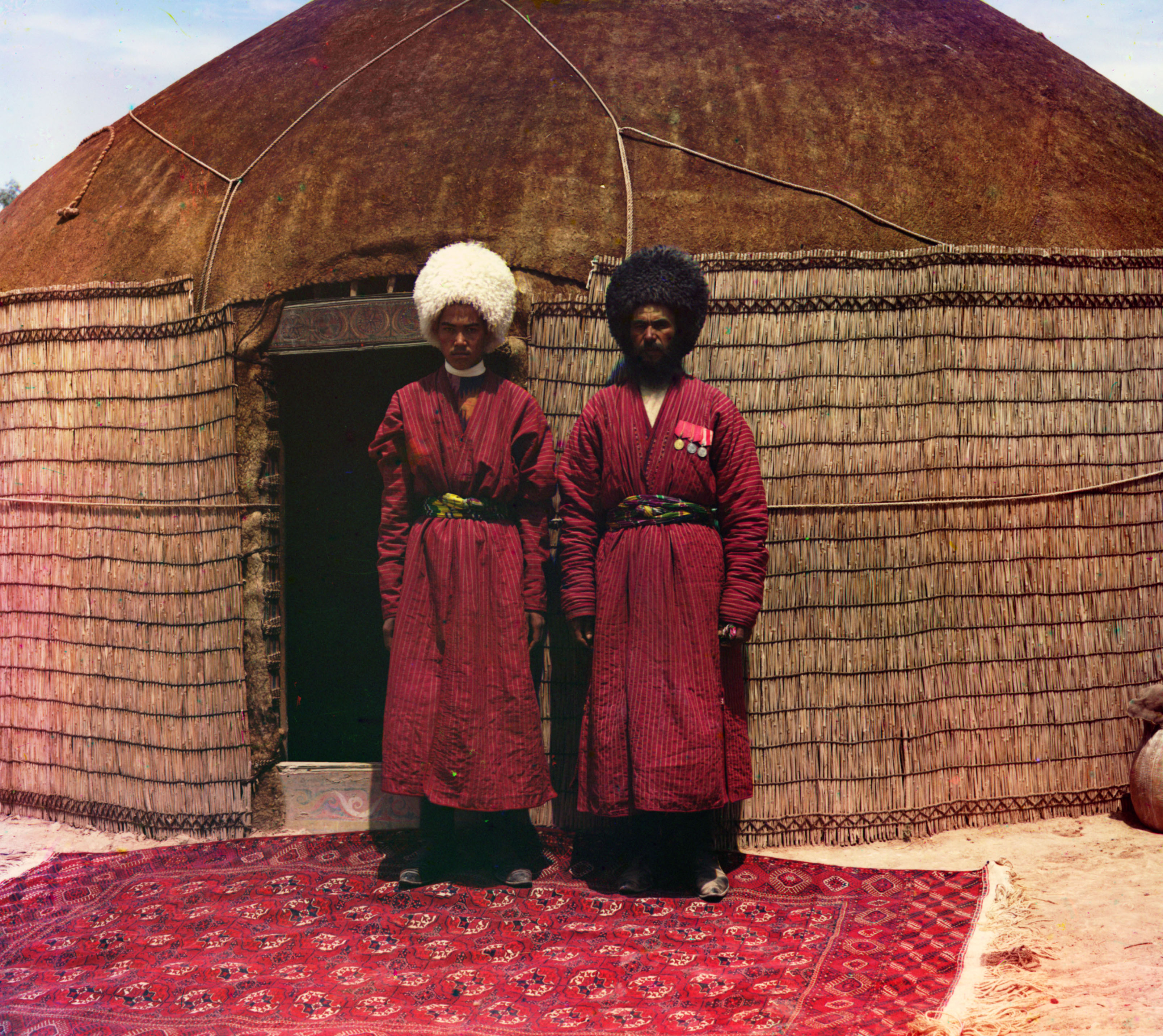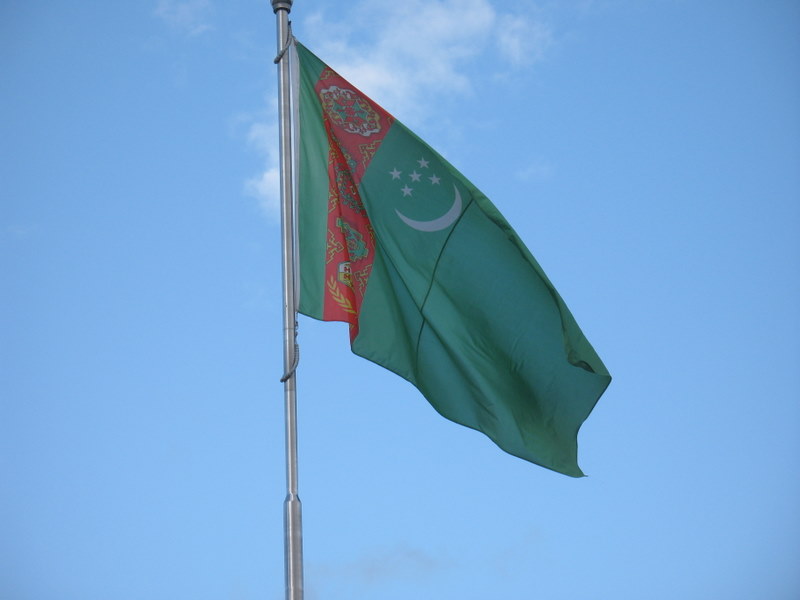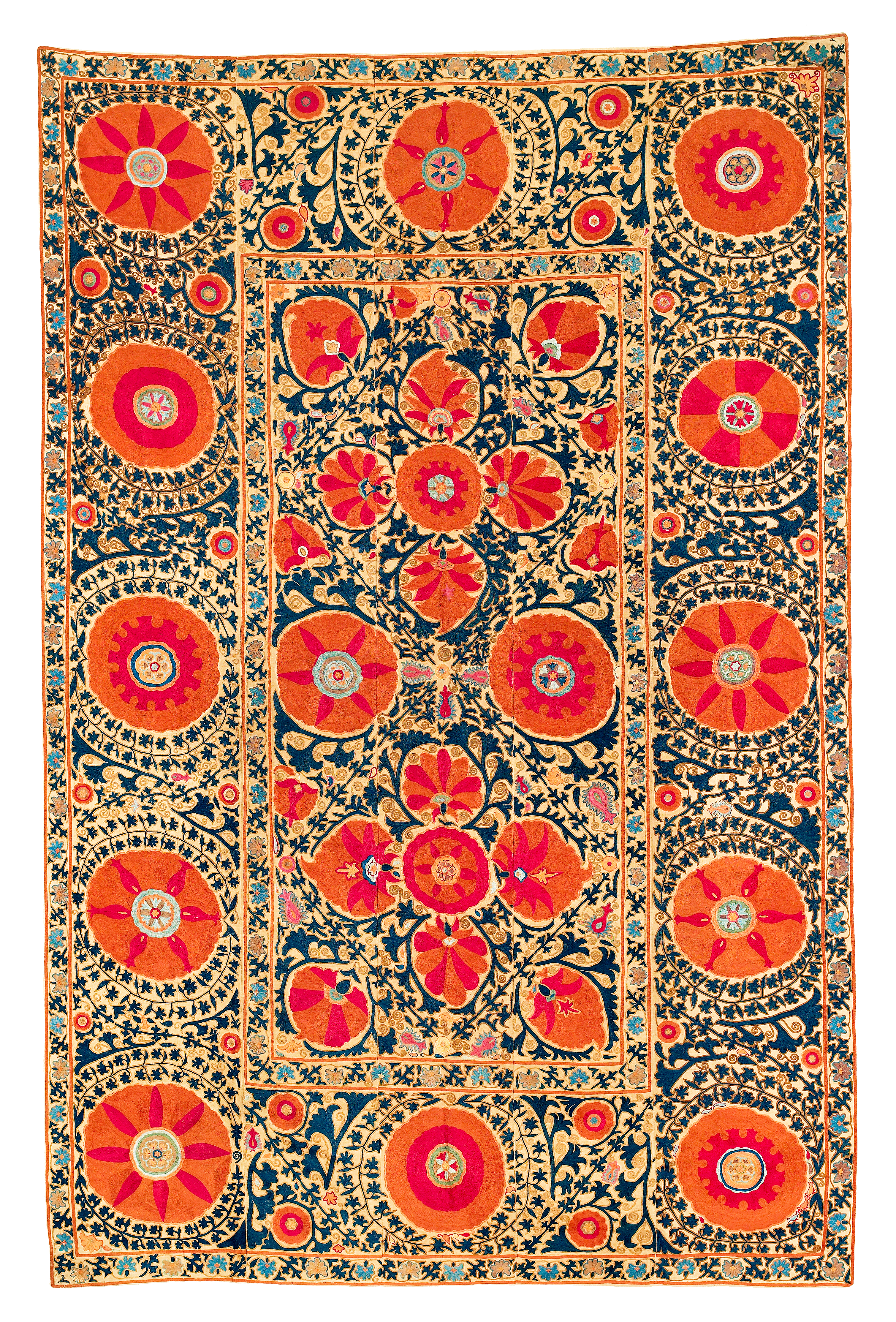|
Yomut Carpet
The Yomut carpet is a type of Turkmen rug traditionally handwoven by the Yomut or Yomud, one of the major tribes of Turkmenistan. A Yomut design, along with designs of the four other major tribes, such as Ersari and Tekke, is featured on the coat of arms and the flag of Turkmenistan. See also *Suzani rug *Turkmen rug *Tush kyiz Tush kyiz ( ky, туш кийиз , туш — ''side, the edge'', кийиз — ''felt''; kk, тұс киіз) are large, elaborately embroidered wall hangings, traditionally made in Kyrgyzstan and Kazakhstan by women to commemorate the marria ... Turkic rugs and carpets Turkmenistan culture Ethnic Turkmen culture {{Textile-arts-stub ... [...More Info...] [...Related Items...] OR: [Wikipedia] [Google] [Baidu] |
Yomud Rug
The Yomut or Yomud is a Turkmen tribe that lives in Western and Central Asia, including Gorgan, Iran; Turkmenbashi, Turkmenistan; the eastern Caspian shores; Khiva, Uzbekistan; and Dashoguz, Turkmenistan. The Yomut carpet is a type of rug traditionally handwoven by the Yomut. History Nadir Shah in 1740 sent a letter to the ruler of Khiva, Ilbars Khan, asking him to come to ask for forgiveness. The envoys of Nadir Shah with a letter arrived at the Ilbars camp, which was headed by 20 thousand horsemen, consisting of Yomuts, (other) Turkmens, Kazakhs and Uzbeks. The letter said: "Several times with the predatory tribe of Yomuts for the purpose of robbery, you raided the vicinity of sacred Mashhad and each time experienced misfortune and, having suffered defeat, defeated, went (back) to Khiva. Despite my peacefulness, three thousand people from the Yomut tribes, with the aim of making a night raid, arrived in Chardjuy. Upon learning of this, the troops of (Nadir Shah) destro ... [...More Info...] [...Related Items...] OR: [Wikipedia] [Google] [Baidu] |
Turkmen Rug
A Turkmen rug ( tk, Türkmen haly; or Turkmen carpet or Turkoman carpet) is a type of handmade floor-covering textile traditionally originating in Central Asia. It is useful to distinguish between the original Turkmen tribal rugs and the rugs produced in large numbers for export mainly in Pakistan and Iran today. The original Turkmen rugs were produced by the Turkmen tribes who are the main ethnic group in Turkmenistan and are also found in Afghanistan and Iran. They are used for various purposes, including tent rugs, door hangings and bags of various sizes. Traditional turkmen carpet making art has been inscribed on the Representative list of the Intangible Cultural Heritage of Humanity by the Intergovernmental Committee for the Safeguarding of Intangible Cultural Heritage of UNESCO in 2019. History A few centuries back, almost all Turkmen rugs were produced by nomadic tribes almost entirely with locally obtained materials, wool from the herds and vegetable dyes, or other ... [...More Info...] [...Related Items...] OR: [Wikipedia] [Google] [Baidu] |
Yomut
The Yomut or Yomud is a Turkmen tribe that lives in Western and Central Asia, including Gorgan, Iran; Turkmenbashi, Turkmenistan; the eastern Caspian shores; Khiva, Uzbekistan; and Dashoguz, Turkmenistan. The Yomut carpet is a type of rug traditionally handwoven by the Yomut. History Nadir Shah in 1740 sent a letter to the ruler of Khiva, Ilbars Khan, asking him to come to ask for forgiveness. The envoys of Nadir Shah with a letter arrived at the Ilbars camp, which was headed by 20 thousand horsemen, consisting of Yomuts, (other) Turkmens, Kazakhs and Uzbeks. The letter said: "Several times with the predatory tribe of Yomuts for the purpose of robbery, you raided the vicinity of sacred Mashhad and each time experienced misfortune and, having suffered defeat, defeated, went (back) to Khiva. Despite my peacefulness, three thousand people from the Yomut tribes, with the aim of making a night raid, arrived in Chardjuy. Upon learning of this, the troops of (Nadir Shah) des ... [...More Info...] [...Related Items...] OR: [Wikipedia] [Google] [Baidu] |
Turkmenistan
Turkmenistan ( or ; tk, Türkmenistan / Түркменистан, ) is a country located in Central Asia, bordered by Kazakhstan to the northwest, Uzbekistan to the north, east and northeast, Afghanistan to the southeast, Iran to the south and southwest and the Caspian Sea to the west. Ashgabat is the capital and largest city. The population is about 6 million, the lowest of the Central Asian republics, and Turkmenistan is one of the most sparsely populated nations in Asia. Turkmenistan has long served as a thoroughfare for other nations and cultures. Merv is one of the oldest oasis-cities in Central Asia, and was once the biggest city in the world. It was also one of the great cities of the Islamic world and an important stop on the Silk Road. Annexed by the Russian Empire in 1881, Turkmenistan figured prominently in the anti-Bolshevik movement in Central Asia. In 1925, Turkmenistan became a constituent republic of the Soviet Union, the Turkmen Soviet Socialist Repu ... [...More Info...] [...Related Items...] OR: [Wikipedia] [Google] [Baidu] |
Coat Of Arms Of Turkmenistan
A coat typically is an outer garment for the upper body as worn by either gender for warmth or fashion. Coats typically have long sleeves and are open down the front and closing by means of buttons, zippers, hook-and-loop fasteners, toggles, a belt, or a combination of some of these. Other possible features include collars, shoulder straps and hoods. Etymology ''Coat'' is one of the earliest clothing category words in English, attested as far back as the early Middle Ages. (''See also'' Clothing terminology.) The Oxford English Dictionary traces ''coat'' in its modern meaning to c. 1300, when it was written ''cote'' or ''cotte''. The word coat stems from Old French and then Latin ''cottus.'' It originates from the Proto-Indo-European word for woolen clothes. An early use of ''coat'' in English is coat of mail (chainmail), a tunic-like garment of metal rings, usually knee- or mid-calf length. History The origins of the Western-style coat can be traced to the sleeved, close- ... [...More Info...] [...Related Items...] OR: [Wikipedia] [Google] [Baidu] |
Flag Of Turkmenistan
The flag of Turkmenistan ( tk, Türkmenistanyň baýdagy) features a white crescent (symbol of Islam) and five stars representing the five regions of the country and the Five Pillars of Islam. Placed upon a green field is a symbolic representation of the country's famous carpet industry. It was introduced as the flag of Turkmenistan on 27 September 1992 to replace the Soviet-era flag which consisted of a red background with two light blue bars in the middle. The modified version with a 2:3 ratio was adopted on 23 January 2001. State Flag and Constitution Day is celebrated on 18 May. Description It features a green field with a vertical red stripe near the hoist side, containing five carpet guls (designs used in producing rugs) stacked above two crossed olive branches similar to those on the flag of the United Nations; a white waxing crescent moon, typical of Turkic and Islamic symbology, and five white five-pointed stars appear in the upper corner of the field just to the fl ... [...More Info...] [...Related Items...] OR: [Wikipedia] [Google] [Baidu] |
Second Carpet Gul From Flag Of Turkmenistan
The second (symbol: s) is the unit of time in the International System of Units (SI), historically defined as of a day – this factor derived from the division of the day first into 24 hours, then to 60 minutes and finally to 60 seconds each (24 × 60 × 60 = 86400). The current and formal definition in the International System of Units ( SI) is more precise:The second ..is defined by taking the fixed numerical value of the caesium frequency, Δ''ν''Cs, the unperturbed ground-state hyperfine transition frequency of the caesium 133 atom, to be when expressed in the unit Hz, which is equal to s−1. This current definition was adopted in 1967 when it became feasible to define the second based on fundamental properties of nature with caesium clocks. Because the speed of Earth's rotation varies and is slowing ever so slightly, a leap second is added at irregular intervals to civil time to keep clocks in sync with Earth's rotation. Uses Analog clocks and watches often have ... [...More Info...] [...Related Items...] OR: [Wikipedia] [Google] [Baidu] |
Suzani Rug
Suzani is a type of embroidered and decorative tribal textile made in Tajikistan, Uzbekistan, Kazakhstan and other Central Asian countries. Suzani is from the Persian سوزن ''Suzan'' which means needle. The art of making such textiles in Iran is called سوزندوزی ''Suzandozi'' (needlework). Suzanis are rather delicate and extremely few examples survive from before the late 18th and early 19th centuries. They belong however to a very ancient tradition. In the early 15th century, Ruy Gonzáles de Clavijo, the Castilian ambassador to the court of Timur (Tamerlane), left detailed descriptions of embroideries that were probably forerunners of the suzani. Suzanis were traditionally made by Central Asian brides as part of their dowry, and were presented to the groom on the wedding day. These hand-embroidered vintage suzanis are infused with the character that only comes from everyday use. The story of each of these suzanis is as rich as their colors and as intricate as ... [...More Info...] [...Related Items...] OR: [Wikipedia] [Google] [Baidu] |
Tush Kyiz
Tush kyiz ( ky, туш кийиз , туш — ''side, the edge'', кийиз — ''felt''; kk, тұс киіз) are large, elaborately embroidered wall hangings, traditionally made in Kyrgyzstan and Kazakhstan by women to commemorate the marriage of a son or daughter. Colors and designs are chosen to symbolize Kyrgyz traditions and rural life. Flowers, plants, animals, stylized horns, national designs and emblems of Kyrgyz life are often found in these ornate and colorful embroideries. Designs are sometimes dated and signed by the artist upon completion of the work, which may take years to finish. The tush kyiz is hung in the yurt over the marriage bed of the couple, and symbolize their pride in their Kyrgyz tradition. The tush kyiz embroideries have been a family tradition among Kyrgyz people for centuries, but among the last two generations, the tradition has been confined to rural women. Shyrdaks (felt rugs) are still being made because these have always been an item for sale ... [...More Info...] [...Related Items...] OR: [Wikipedia] [Google] [Baidu] |
Turkic Rugs And Carpets
Turkic may refer to: * anything related to the country of Turkey * Turkic languages, a language family of at least thirty-five documented languages ** Turkic alphabets (other) ** Turkish language, the most widely spoken Turkic language * Turkic peoples, a collection of ethno-linguistic groups ** Turkic migration, the expansion of the Turkic tribes and Turkic languages, mainly between the 6th and 11th centuries ** Turkic mythology ** Turkic nationalism (other) ** Turkic tribal confederations See also * * Turk (other) * Turki (other) * Turkish (other) * Turkiye (other) * Turkey (other) Turkey is a country in Asia and Europe. Turkey may also refer to: Birds * Turkey (bird), the genus ''Meleagris'', including several species of large birds native to North America and Central America **Ocellated turkey, native to the Yucatán ** ... * List of Turkic dynasties and countries {{disambiguation Language and nationality ... [...More Info...] [...Related Items...] OR: [Wikipedia] [Google] [Baidu] |
Turkmenistan Culture
Turkmenistan ( or ; tk, Türkmenistan / Түркменистан, ) is a country located in Central Asia, bordered by Kazakhstan to the northwest, Uzbekistan to the north, east and northeast, Afghanistan to the southeast, Iran to the south and southwest and the Caspian Sea to the west. Ashgabat is the capital and largest city. The population is about 6 million, the lowest of the Central Asian republics, and Turkmenistan is one of the most sparsely populated nations in Asia. Turkmenistan has long served as a thoroughfare for other nations and cultures. Merv is one of the oldest oasis-cities in Central Asia, and was once the biggest city in the world. It was also one of the great cities of the Islamic world and an important stop on the Silk Road. Annexed by the Russian Empire in 1881, Turkmenistan figured prominently in the anti-Bolshevik movement in Central Asia. In 1925, Turkmenistan became a constituent republic of the Soviet Union, the Turkmen Soviet Socialist Republic ( ... [...More Info...] [...Related Items...] OR: [Wikipedia] [Google] [Baidu] |



